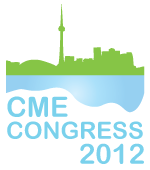Bruce Bellande, PhD, FACME, CCMEP (DWA Healthcare Communications Group); Zev Winicur, , PhD (DWA Healthcare Communications Group); Kathleen Cox, MA (DWA Healthcare Communications Group); Kris Singleton, MS, RD (Avant Healthcare Marketing)
Synopsis
Comparative analysis of high-quality educational programs coupled with internal self-assessment using Baldrige quality criteria as part of needs assessment can provide benchmarks and direction for development of a world-class medical device curriculum.
Purpose
To benchmark the qualities of world-class learning organizations, evaluate how the client’s learning organization fit within those benchmarks, and chart a path to advance the client into world-class educational ranks, educational consultants conducted a client self-assessment using Baldrige criteria and a comparative analysis of organizational structures, processes, and outcomes of competing companies known for their educational excellence. Results were used to develop a world-class educational program for the client.
Methods
An environmental scan of the physician education landscape was conducted using six companies selected for overall market performance and well-developed educational programs. Consultants created topics to guide the research, organized by Donabedian’s classic model for assessing healthcare quality based on structure, process, and outcomes. Primary research involved live interviews and survey instruments; secondary research used online and traditional sources, including annual reports, news articles, government and industry sites, plus assorted social media. All information was analyzed to identify main themes, key points, and strategic recommendations. Concomitantly, an internal gap analysis of organizational and educational strengths and weaknesses was conducted using Baldrige National Quality Award critical success factors.
Results
Consultants identified best educational practices of world-class companies for benchmarking and used internal gap analysis to pinpoint client strengths and weaknesses. These data became the foundation for a recommended systematic competency-based curriculum redesign to advance the client’s position in medical device education.
Applications and Future Directions
This model can be applied anywhere to benchmark key attributes of top-quality programs to guide the development of a target program seeking advancement.
Funding Sources
Project was funded by Medtronic





